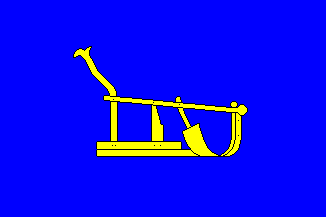![[Borkel en Schaft village flag]](../images/n/nl-nb0bs.gif) image by Jarig Bakker, 25 Jun 2009
image by Jarig Bakker, 25 Jun 2009
village flag used since c. 2009

FOTW beschäftigt sich mit der Wissenschaft der Vexillologie (Flaggenkunde).
Alle auf dieser Website dargebotenen Abbildungen dienen ausschließlich der Informationsvermittlung im Sinne der Flaggenkunde.
Wir distanziert uns ausdrücklich von allen hierauf dargestellten Symbolen verfassungsfeindlicher Organisationen.
Last modified: 2018-12-15 by rob raeside
Keywords: borkel en schaft |
Links: FOTW homepage |
search |
disclaimer and copyright |
write us |
mirrors
![[Borkel en Schaft village flag]](../images/n/nl-nb0bs.gif) image by Jarig Bakker, 25 Jun 2009
image by Jarig Bakker, 25 Jun 2009
village flag used since c. 2009
Borkel was a small village against the Belgian border with 50 houses; every ball thrown from any houses landed on the Borkelse heather. The 300 inhabitants led a minimal existence on the extremely poor soil. They were all members of the parish of Borkel-en-Schaft with a shed-church devoted to St. Servatius. The old church had a spire and the States-General (of The Netherlands) allowed the priest to live there, but not preach! When he was allowed to preach eventually the inhabitants continued to use the shed-church.
The municipality of Borkel-en-Schaft consisted of the settlements Borkel
en Schaft, Klein-Borkel, Hoek, Heuvel, Hoef-en-Brug, Peuterseind, Heijerseind,
and Klein-Schaft. It had 88 houses and 500 inhabitants, living off rye,
buckwheat, oats, a lotta potatoes, "spurrie" (Spergula, related
to asparagus) and flax. Most soils were extremely poor. The meadows along
the mighty Dommel river were rather good, however. The inhabitants belonged
to two parishes, but some bright mind developed a scheme to build a church
between the villages and to knock down the old churches. After the Reformation
Borkel en Schaft belonged to other parishes: Borkel to Westerhoven and
Schaft to Valkenswaard. In 1690 they split from those parishes and were
united under one priest. After the conquest of Den Bosch by the Dutch troops
the villagers had to go to church in Achel, a nearby village belonging
to the princedom of Luik, now part of Belgian Limburg. During the friendly
French occupation at the end of the 18th century the Achelaars used the
church of Schaft for their devotions.
Source: A.J. van der Aa, Aardrijkskundig Woordenboek der Nederlanden,
part 2, 1840.
Near Schaft a certain general or colonel bivouacked in order to gun
down the castle of Achel, and it is said that the remainders can still
be admired. His name is forgotten, but legend has it that the Schafters
needed a whole day to cook the coffeebeans he left behind. The church of
Schaft was a small building, devoted to St Peter in his fetters, with a
spire but without an organ. It was (together with the Borkel church) demolished
in 1844 to make place for the church in the heather.
Source: A.J. van der Aa, Aardrijkskundig Woordenboek der Nederlanden,
part 10, 1847.
Jarig Bakker, 5 Aug 2009
The Corn Spurrey (Spergula arvensis L.) belongs to Family Caryophyllaceae
and is, therefore not related to genus Asparagus, Family Liliaceae.
It was grown in the past on poor soil as a rye intercrop and use as a forage
for cattle.
According to Littré's dictionary (1863-1877), spurrey forage
increased milk production in cows, which was used in the Netherlands to
produce "spurrey butter" ("spurrie-boter", as reported by J.L. van
Aelbroeck, "L'agriculture de la Flandre", 1830).
The French agriculture and gardening textbooks of the 19th century
(and the Dutch, too, I guess) provide guidelines for spurrey cultivation.
Today, like most obsolete plants, spurrey is mostly considered as a weed.
However, its small, black seeds are sold as a bait for fish.
Ivan Sache, 5 Aug 2009
 image by Shipmate Flagchart : http://www.flagchart.net
image by Shipmate Flagchart : http://www.flagchart.net
Hosted by: Fanshop-Online.de und Handy-Shop.de
Tipp: Apple iPhone 12 im Shop